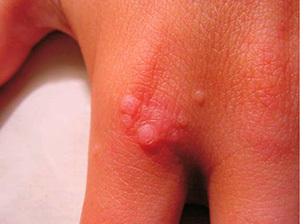
Papillomas or warts are the most common disease. The presence of growths on the skin is noted in 80% of the population. This defect is caused by the human papilloma virus (HPV). New growths can occur in any part of the body: on the neck, arms, face, external genitals, as well as internal visceral organs. However, at first glance, these dangerous neoplasms can degenerate into malignancies and cause melanoma, a skin cancer.
Papillomas are made up of superficial skin epithelium (warts) and internal mucous membranes (warts). They can be of different shapes, such as round or stick-shaped, mostly rise above the skin and have a typical color. Each wart has the same type of structure: a substrate made up of connective tissue (collagen and elastin, which give free fiber to the stroma) and blood capillaries located in the center of the wart.
Why small papillomas appear on the body
The only cause of any growth is HPV damage due to a weakened immune system. About 120 types of viruses are known. Infection most often occurs after a delayed inflammatory process. The activity of HPV viruses depends on the immune status and the individual response of the human body.
Minor lesions of skin areas, various microtraumas, violation of the epidermal barrier allow the virus to enter the upper layers of the skin. This virus does not circulate in the bloodstream, but is located directly in the dermis. Therefore, the incubation period is not less than 3 and not more than 5 months. This happens with latent symptoms. Clinical changes will only be noticeable after 5 months. The double helix of DNA that is part of it ensures that the disease recurs even after an immune response or clinical cure, because a single DNA is stored in the epidermal cells.
There are four main causes of a viral infection:
- Contact and domestic reason - physical contact (handshake) with the carrier of this virus, as well as the use of the patient's personal hygiene items.
- Suppression of the general and local immune systems due to the existing inflammatory process or constant stress.
- From mother to child (anogenital warts). Carried at birth and has a high risk of progression and a large area of spread.
- Sexual contact with a patient with HPV in 50% of cases.

Infection via the contact and household route is first in number. The hands are the most exposed and vulnerable part of the body. Therefore, small papillomas often appear on the hands.
Papillomas are classified according to several morphological classifications.
By size are: small and large papillomas.
The shape of the warts is as follows:
- Normal- localized on the free lumbar region of the upper extremities: the palm of the hand, the phalanx of the fingers, the elbow, the posterior surface of the hand. They are spherical.
- Simple- found all over the body, more often on the neck and arms. They look like a gray bubble that rises above the skin.
- Specified- Looks like the fluff of a rooster. In appearance they are small and white, stick-shaped.
- Seborrheic keratosesare age-related warts. Keratin free of pathogenic properties due to different origins.
- Spinesare the toughest and most difficult. Often large and high above the skin.
By location: plantar (arms and legs), flat (papillomas on the body), common (arms), butcher's warts (on the surface of the plantar foot).
Wart etiology: hereditary and acquired.
Small papillomas may be more common in patients. And it is this type that is able to form groups.
What are the dangers of small papillomas
The danger of small papillomas is that they are little visible on the body and can appear unexpectedly. This increases the risk of developing HPV.

If you have small warts after skin contact, be sure to see a dermatologist. A highly specialized doctor will be able to distinguish between the type of papilloma and its duration, which will serve as a basis for prescribing treatment.
Do not tear, do not try to get rid of small papillomas on your own, and even more so with the help of folk methods. You can hurt yourself! As benign neoplasms are at risk of degeneration in oncology, the resulting growths should be removed at the clinic.
Some types of human papillomavirus are highly oncogenic. And they can cause not only skin cancer (melanoma), but also cervical (female) and anal ring (male) cancer, the formation of polyps in the internal organs.
Papillomas on the body where there is increased friction or damage must be removed urgently! To avoid pathologies.
How to remove small papillomas using different methods
Because this defect is more common in women than men, most warts are removed at the patient's initiative. Even for no apparent reason. How to remove papillomas on the body?
Type of drug treatment:
- Taking medicines that affect the immune system. Immunomodulators and immunoregulatory agents, immunostimulants and other drugs that are immunotropic enhance the immune response and normalize a specific impaired immune bond.
- Use of intramuscular injections and rectal suppositories with antiviral activity in combination with vitamins.
- Medicines are prescribed to improve the immune response that stimulates the production of their own interferons.
- Use of herbal medicines for general body strengthening.
Surgical treatment:
- Surgical excisionis the very first method to remove papillomas. It is common among other types. Wart excision is performed with all underlying tissues. The efficiency of this method is 65% and the total recurrence is about 30%. A side effect of surgical excision is scarring. This technique is used to remove papillomas located in the lower extremities.
- Chemical coagulation- burning warts with chemicals. 95% silver nitrate, 17% salicylic acid and cantaridine were used. The strongest is cantarin. By penetrating the lower layers of the skin and destroying the wart. A long and expensive method. The efficiency of this technique is about 80%.
Methods for removing very small papillomas
How do I remove a "very small" papilloma? There are many methods in modern clinics to remove small warts without cosmetic defects.
If you're planning to get rid of annoying growths all over your body quickly and effectively, here are some of the best ways to prevent very small growths:
- Cryotherapy.Freezing with liquid nitrogen. The fastest and most accessible technique will take no more than 15 minutes. It is recommended to remove the papillomas located on the face and neck.
- Laser destruction method.There are several types of lasers. The most popular is the carbon dioxide laser. Final healing occurs 7 days after surgery. Recommended for hard-to-reach warts.
- Photodynamic therapy for warts.Guides at high wavelengths of light. The most effective method (95%), the buildup will be easily removed and no scars will remain.
Preventing small growths
Prevention is always easier than cure! Let this slogan become the merit of your life. It is important to follow a healthy lifestyle to prevent the appearance of papillomas. Quit bad habits (smoking) for your health! Strengthen the immune system and, if necessary, start treatment on time. Reduce stress and relax more. Try to eat right, get enough sleep and spend time outdoors. Monitor your health, visit the clinic every year and check regularly. If you suspect HPV or papilloma, contact your doctor immediately. Follow the rules of prevention and you will not care about any disease.














































































